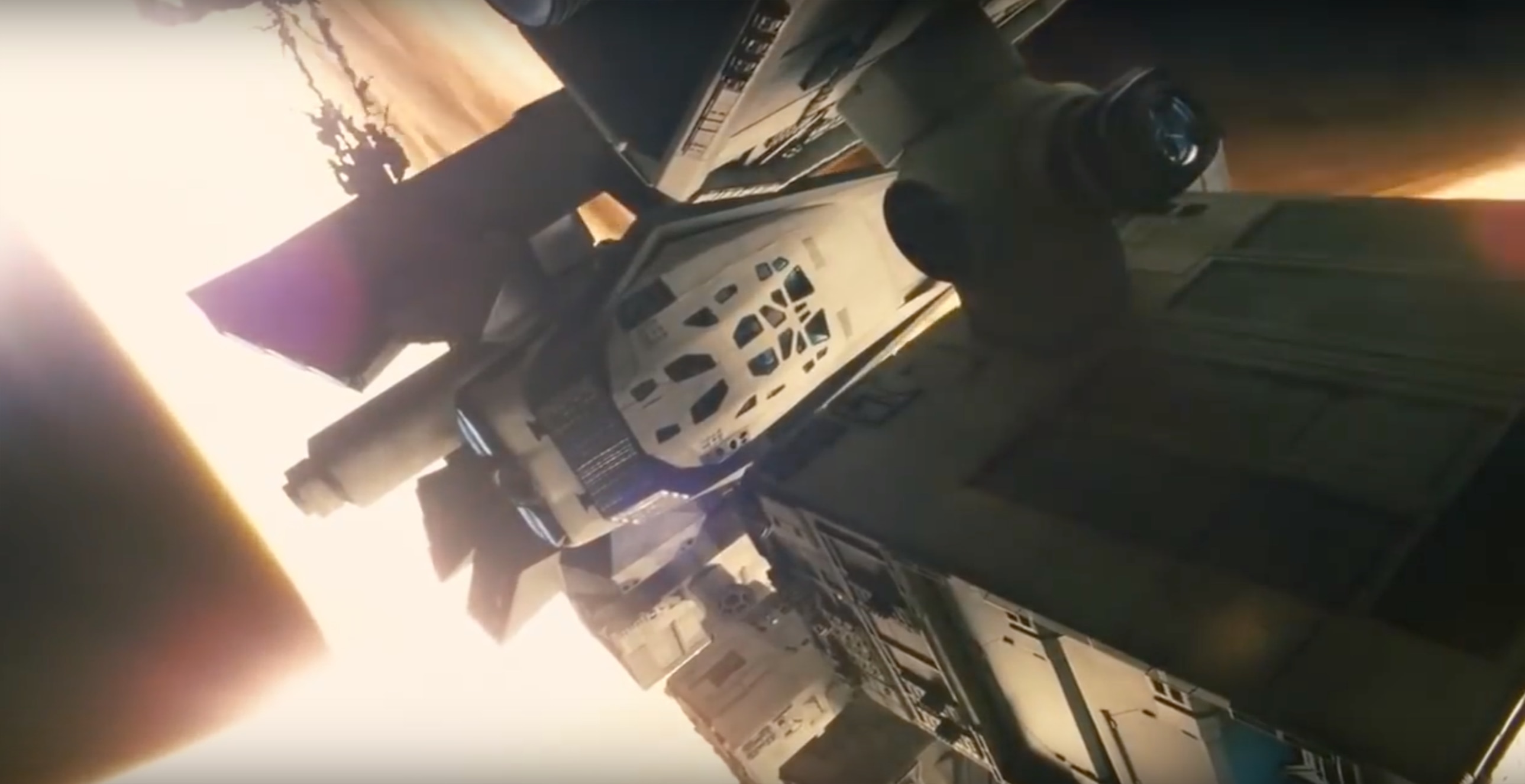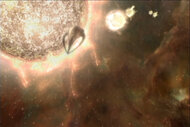Create a free profile to get unlimited access to exclusive videos, sweepstakes, and more!
Could spacecraft actually use black holes as portals through hyperspace?

Imagine Interstellar actually happened. What if Cooper could survive his fall into the supermassive black hole Gargantua without being flattened by the crushing gravity? This might actually be possible (at least in theory).
Hyperspace travel has been the dream of sci-fi junkies for as long as science fiction has existed. Remember that Interstellar is adapted from a book that came form the brains of Nobel Prize-winning astrophysicist Kip Thorne. Physicist Gaurav Khanna has now revealed that an experiment done to prove that Cooper would make it through a black hole 100 million times more massive than our sun without being smashed to a million bone shards has now proven that could happen — if you find the right black hole.
Cosmic travel via a black hole is possible in theory because intense gravity compresses a dying star into a dense, scorching singularity that is so hot it supposedly punches a hole through the fabric of spacetime. It is through this hole that hyperspace travel is thought possible. While these insanely hot and dense singularities are thought to vaporize anything that falls into them with their gravitational power, a hypersonic spacecraft headed towards Sagittarius A*, which lies right at the center of our solar system, may have a different outlook.
Like Gargantua, Sagittarius A* is a rapidly rotating supermassive black hole that may be an exception to the usual cosmic carnage. It might be sort of shocking that the singularity inside a rotating black hole is actually too weak to do any serious damage.
“One can think of it as analogous to the common experience of quickly passing one’s finger through a candle’s near 2,000 degree flame, without getting burned,” Khanna told Space.com.
This is where Interstellar and science collide. Khanna’s Ph. D. candidate Caroline Mallary wanted to translate the movie and Cooper’s ultimate fate into (theoretical) reality. She built a computer model that would simulate the effects of huge rotating black holes like Gargantua or Sagittarius A* on any object passing through. What she found was that the inner horizon singularity, or the singularity that anything venturing into such a black hole has no way of maneuvering around, would barely affect a spacecraft if at all.
Black holes of Sagittarius A*’s magnitude are also an anomaly in that the usual stretching and squeezing and all-out torture of anything falling through the average black hole would be drastically minimized. Unlike most black holes, whose lethal effects have no limit, those within a rapidly rotating supermassive black hole are finite. There would be no point in the journey where an entire section of the spacecraft would be stretched or squeezed or punched in. Meaning, crew on board a hypothetical spacecraft flying through might not even feel anything.
Are these assumptions overly simplified? Maybe. Disturbances to the black hole were not accounted for in the simulation, so there is no telling what would happen if it was showered with space dust or falling radiation. Most black holes are.
While there is more investigation to be done here, just the thought of actually being able to travel impossible distances through space just by flying through a portal is enough to fuel your imagination.
(via Space.com)














